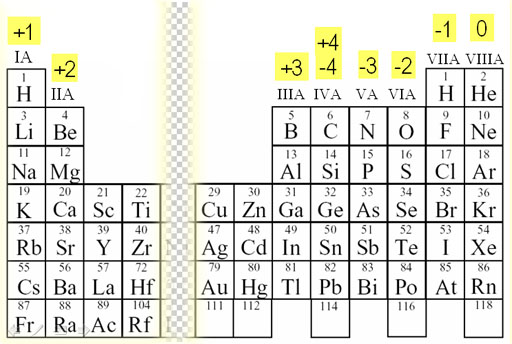 Ion Charge: the electrical charge that forms on an atom when it gains or loses electrons
Ion Charge: the electrical charge that forms on an atom when it gains or loses electrons- elements on the left side of the Periodic Table tend to form positive ions (cations)
- elements on the right side of the Periodic Table tend to form negative ions (anions)
- elements are arranged in columns or families by their similar ion charge(s)
- from the left side, elements begin with a positive charge that increases down the right of the period until it reaches a non-metal
- from the right side, elements begin with a negative charge that increases negatively to the left of the period until it reaches a metal
- the transition metals which have been positioned in the center (indicated on the chart by a solid checkered line) because most of them have more than one charge
Chemical Reactivity: the rate at which a chemical substance tends to undergo a chemical reaction time
- for metals, chemical reactivity increases as you move towards the left and down
- for non-metals, chemical reactivity increases as you move towards the right and up
ex. Potassium is more reactive than Beryllium because it is farther to the left and farther down. (Potassium also has much more electrons and is only one electron away from reaching a full valence shell.)
Ionization Energy: the energy needed to remove electrons from an atom; also referred to as ionization potential
- an atom with layers of inner electrons has stronger ionization energy because the inner electrons protect the outer electrons from the force of attraction the protons give off
ex.Chlorine has stronger ionization energy than Lithium


dumb website